Abstract
The development of new, “creative” behaviors was examined in a problem-solving context. One form of problem solving, improvisation, was defined as finding a substitute to replace the specifically designated, but currently unavailable, tool ordinarily used to solve the problem. The study examined whether preschool children spontaneously displayed generalized improvisation skills, and if not, whether they could be trained to do so within different classes of tools. Generalization across different tool classes was monitored but not specifically trained. Five preschool children participated in individual sessions that first probed their skill at improvising tools, and later trained and probed generalized improvisation in one or more of three tool classes (Hammers, Containers, and Shoelaces), using a multiple-baseline design. All five children were trained with Hammers, two were trained in two classes, and two were trained in all three tool classes. Four of the five children improvised little in Baseline. During Training, all five showed increased generalized improvisation within the trained class, but none across classes. Tools fabricated by item combinations were rare in Baseline, but common in Training. Followup probes showed that the training effects were durable.
Keywords: creativity, problem solving, improvisation, training, generalization, preschool children
Full text
PDF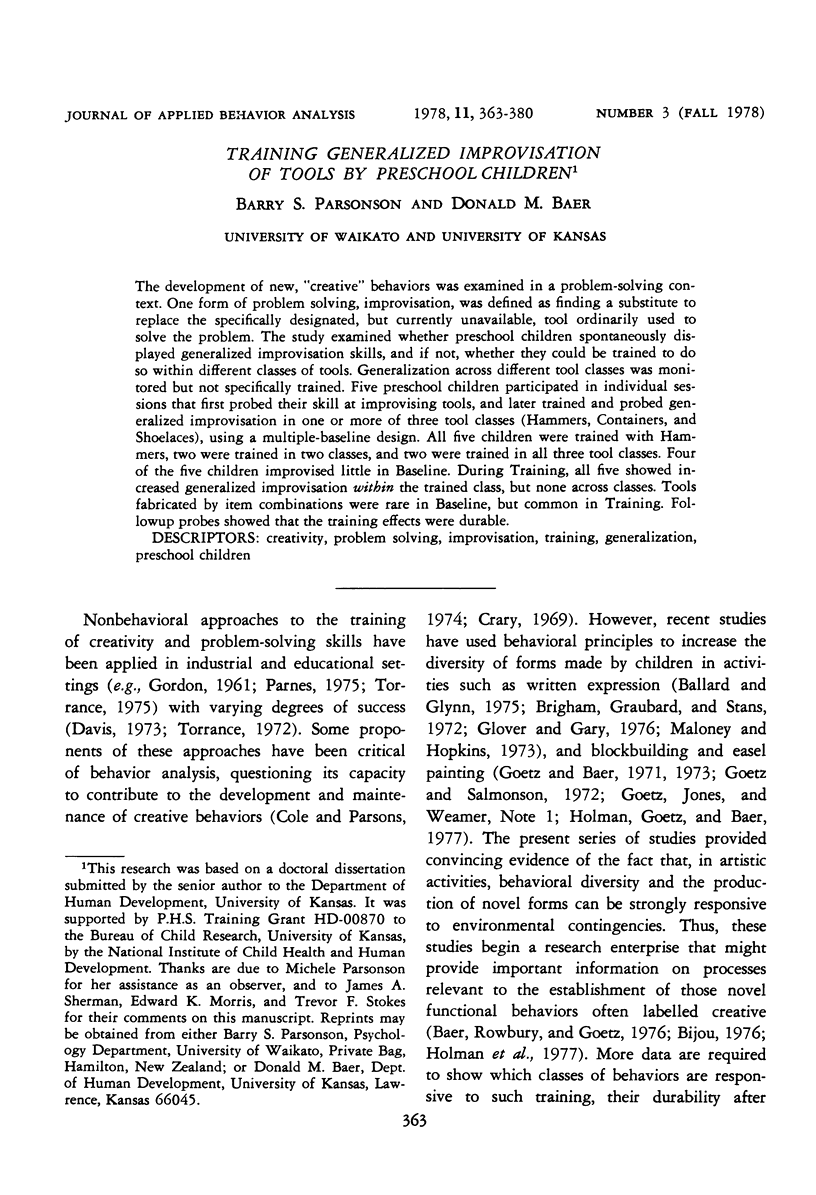
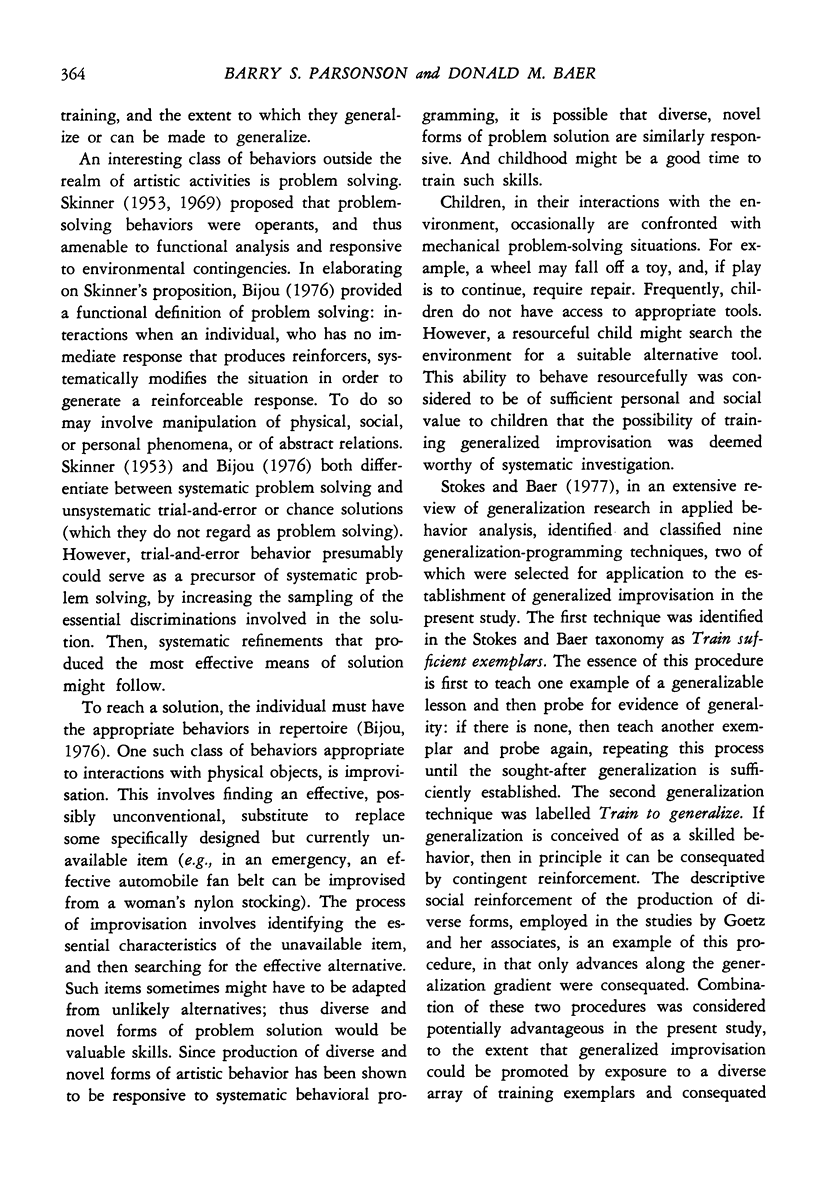
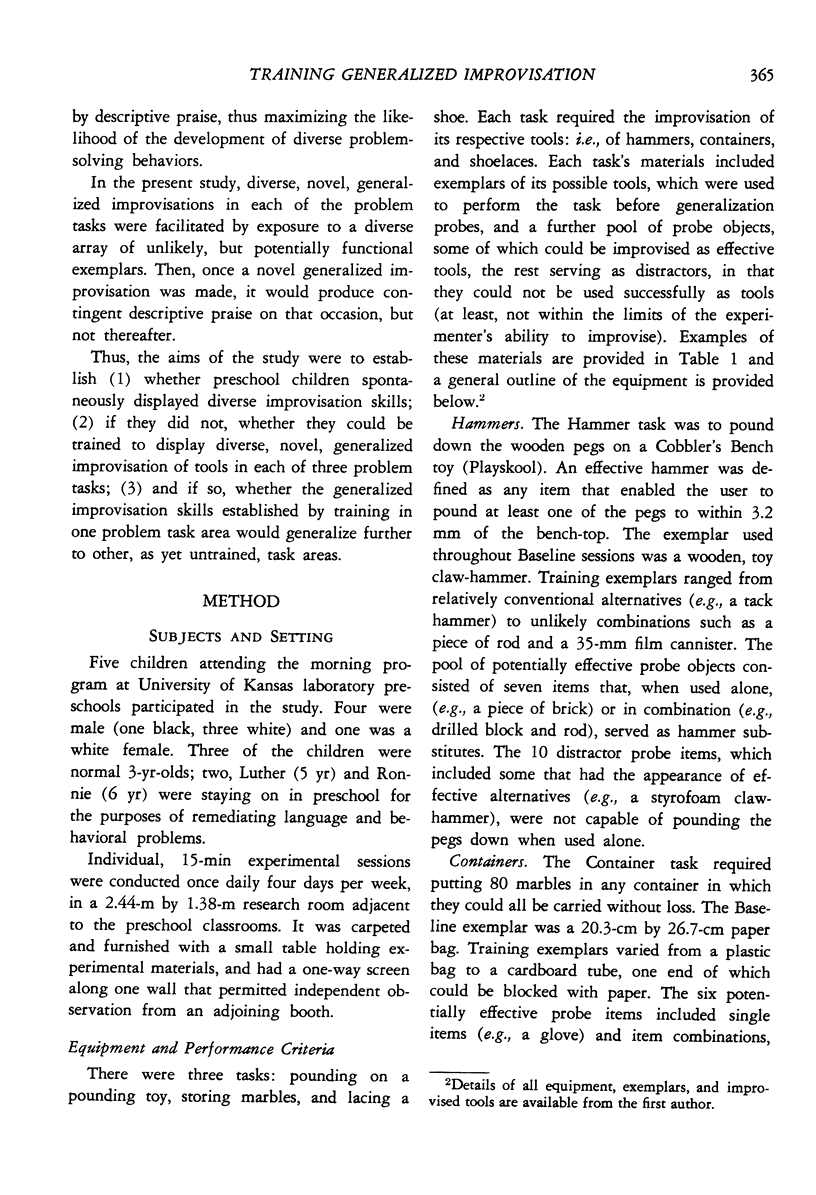
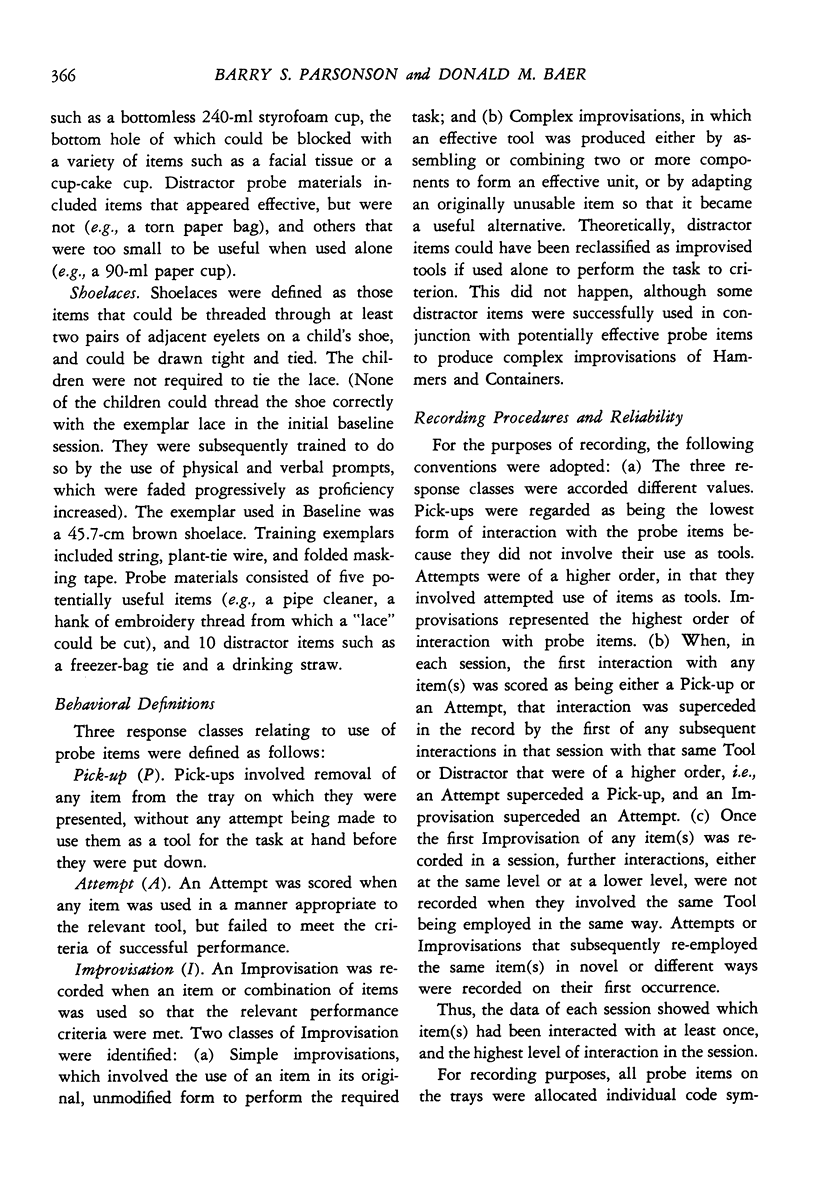
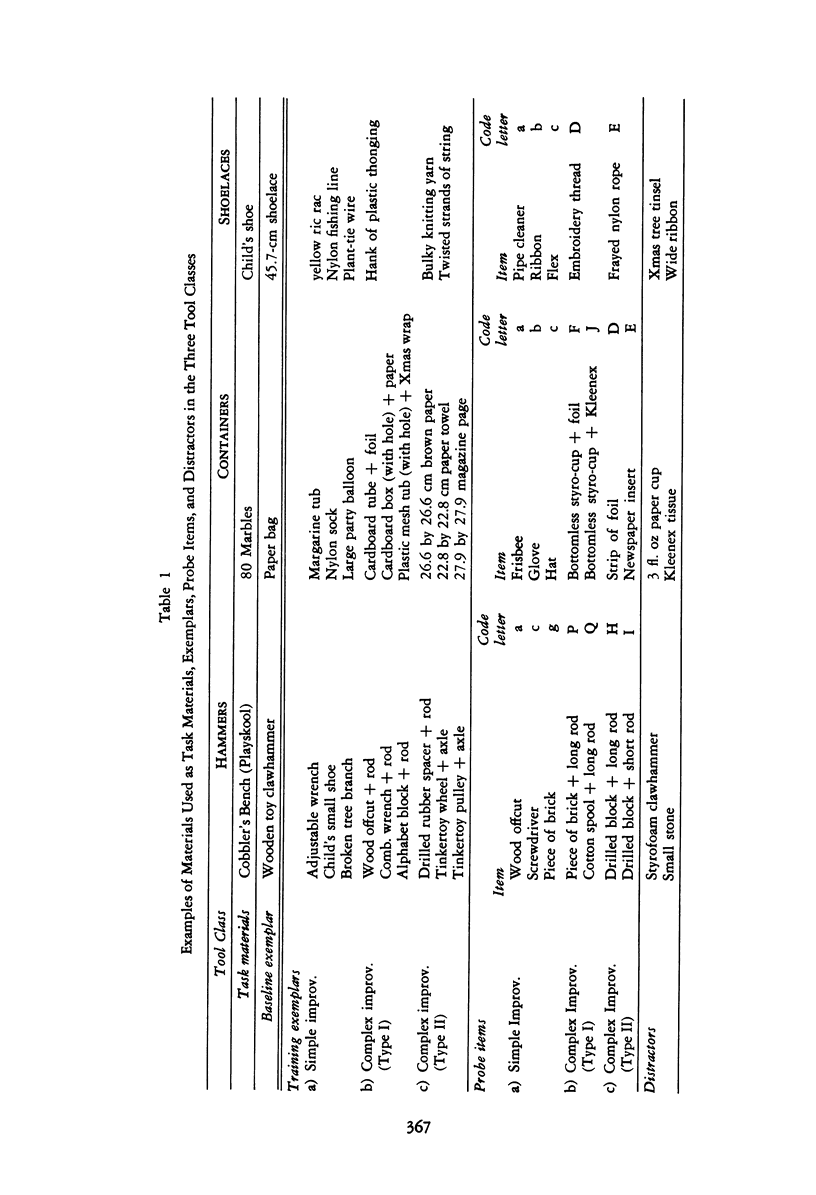
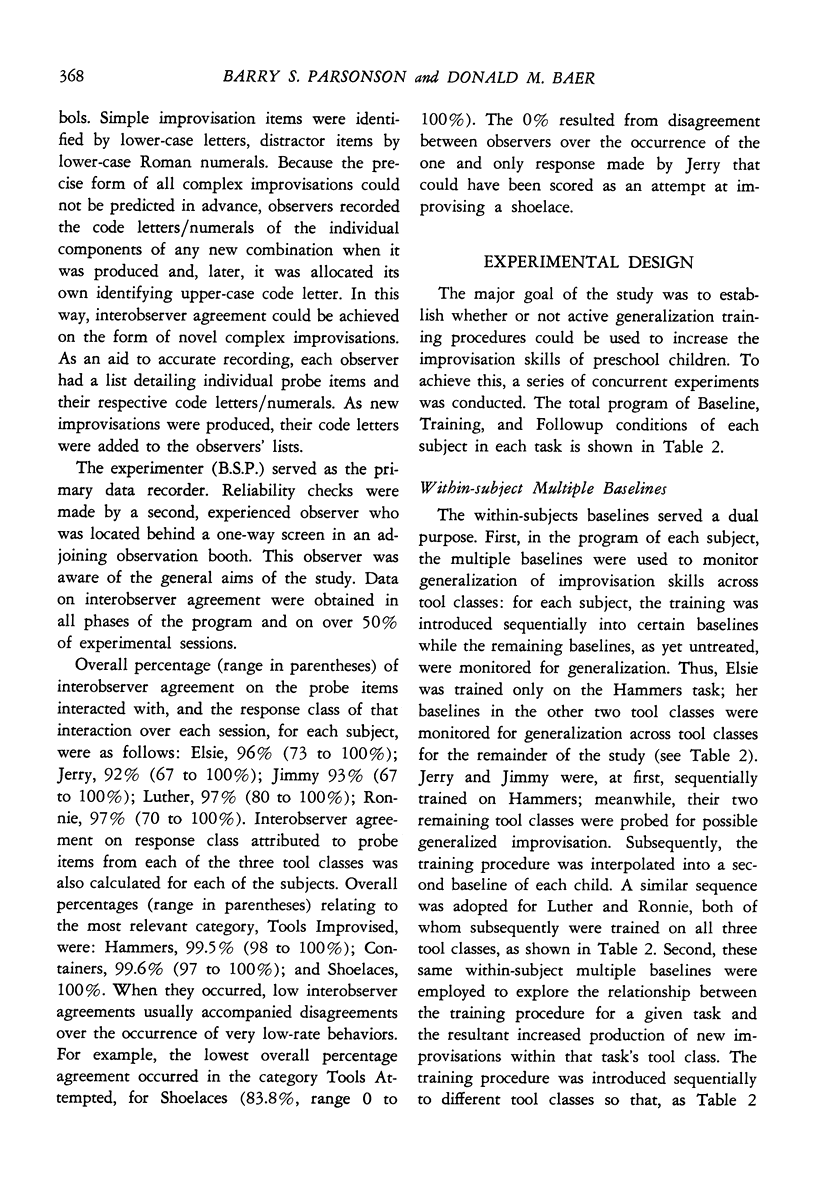
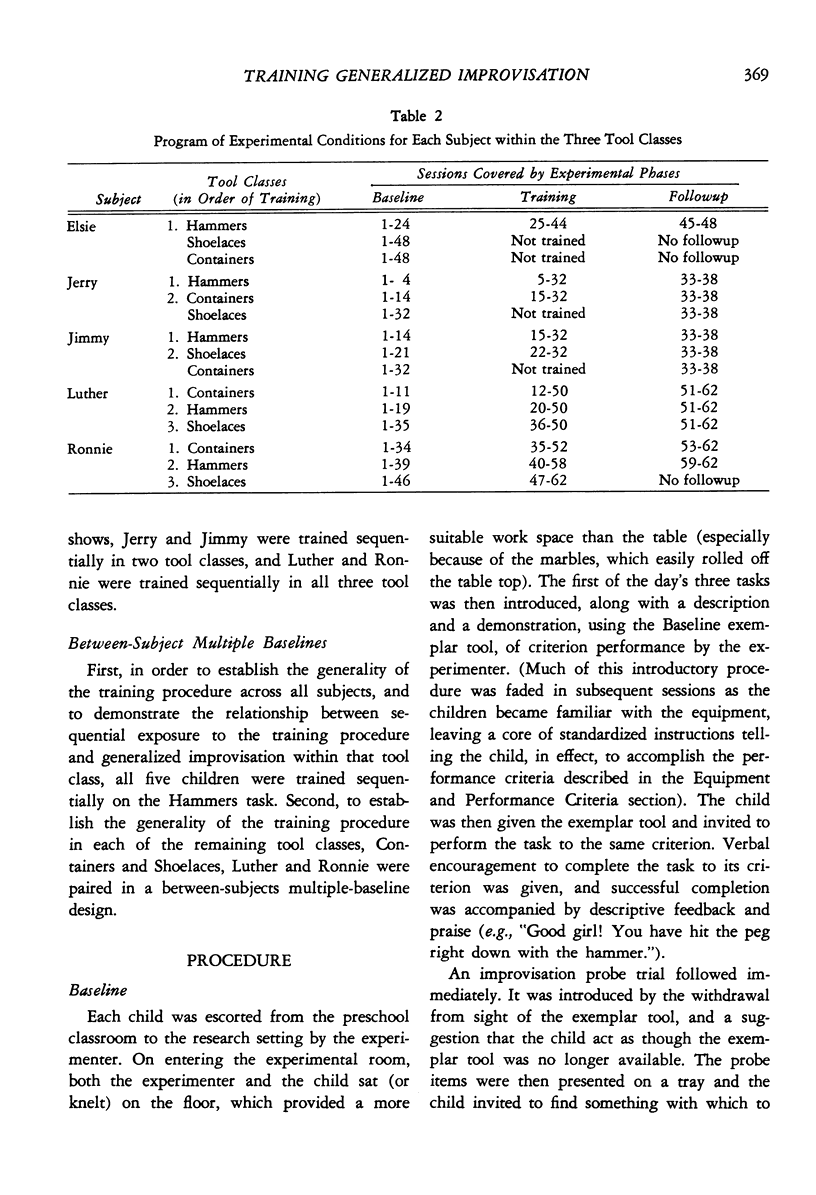
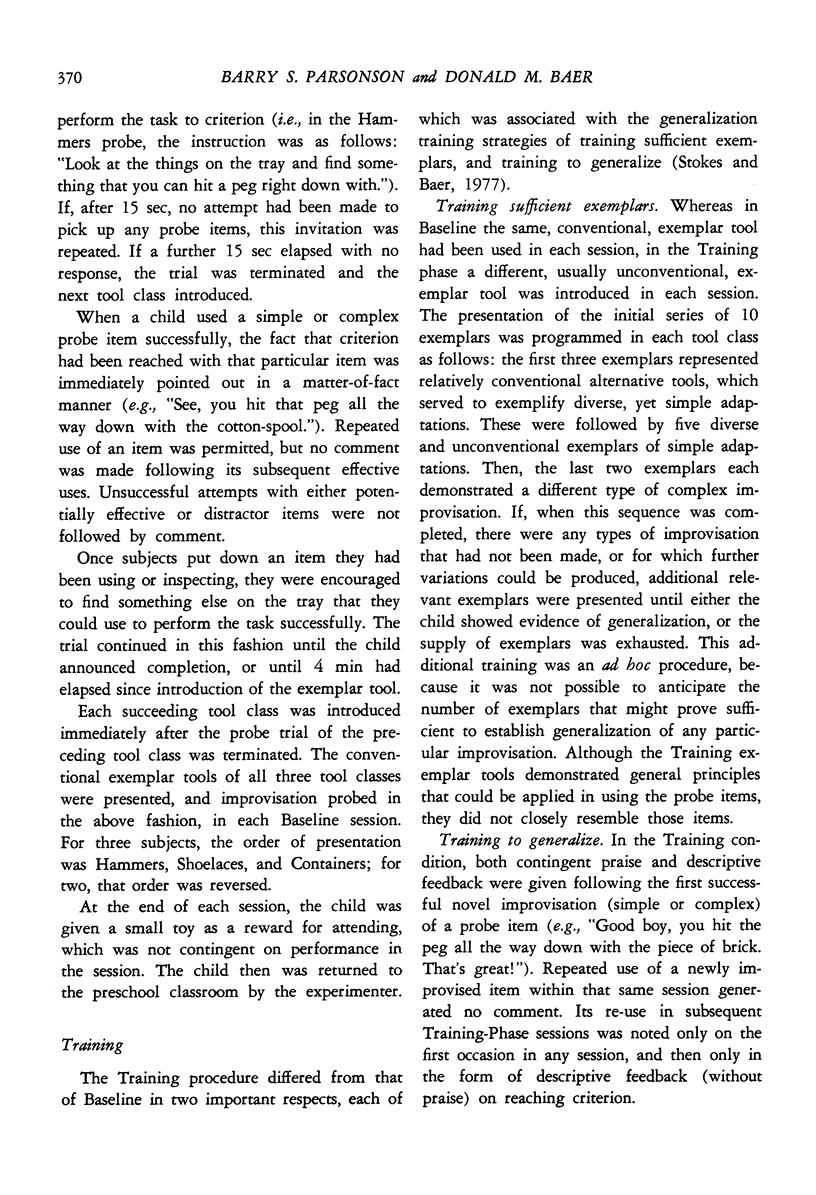
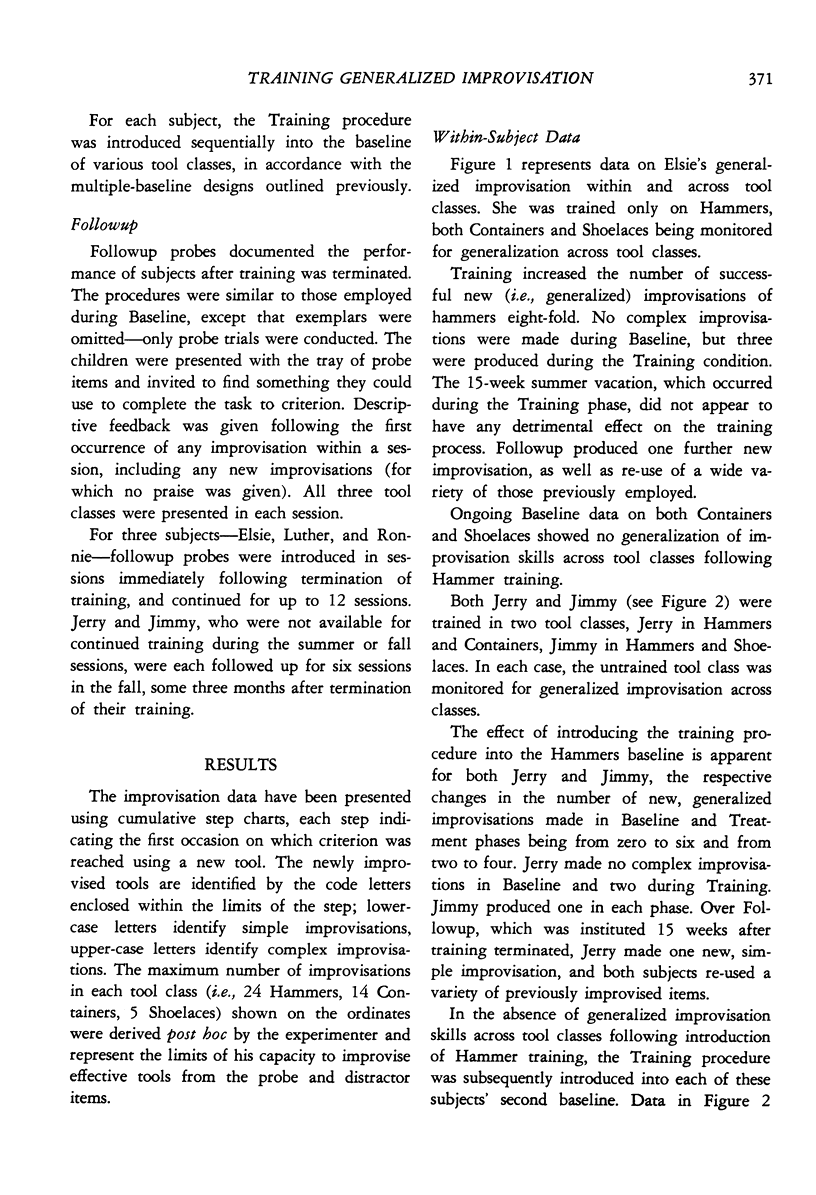
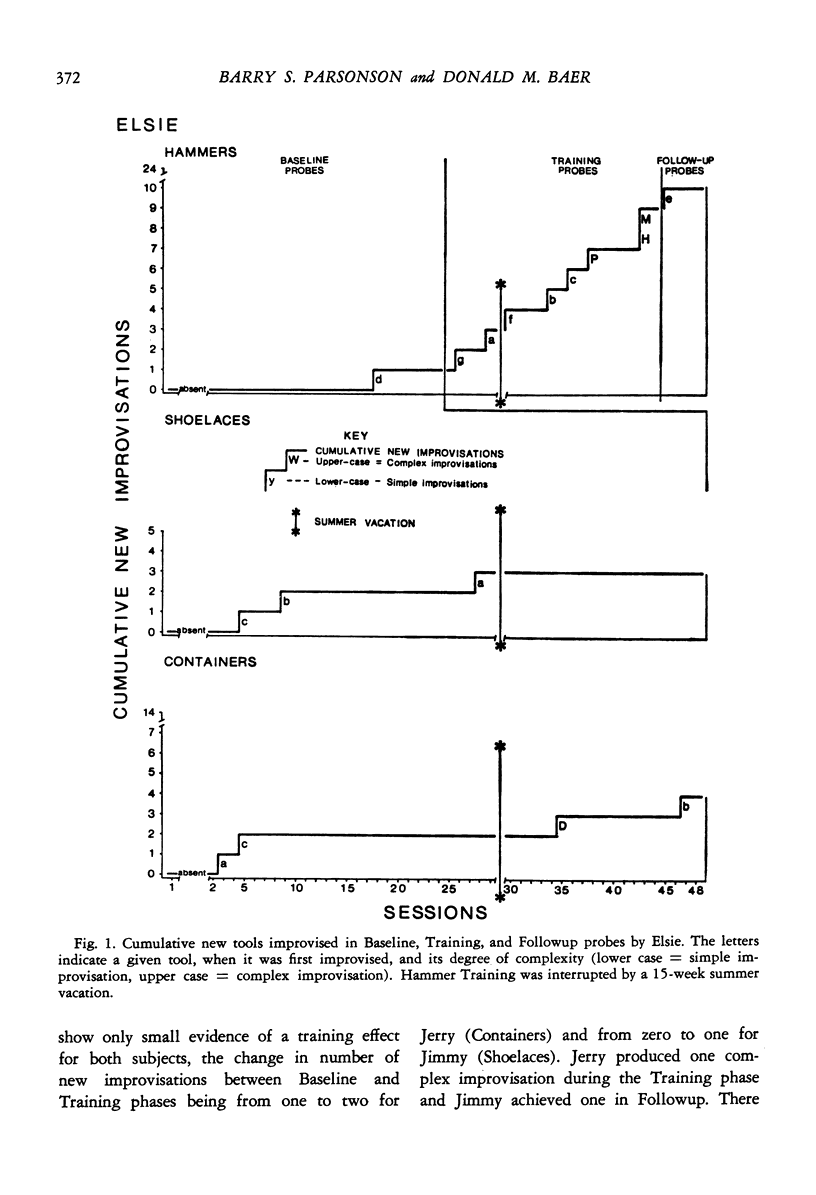
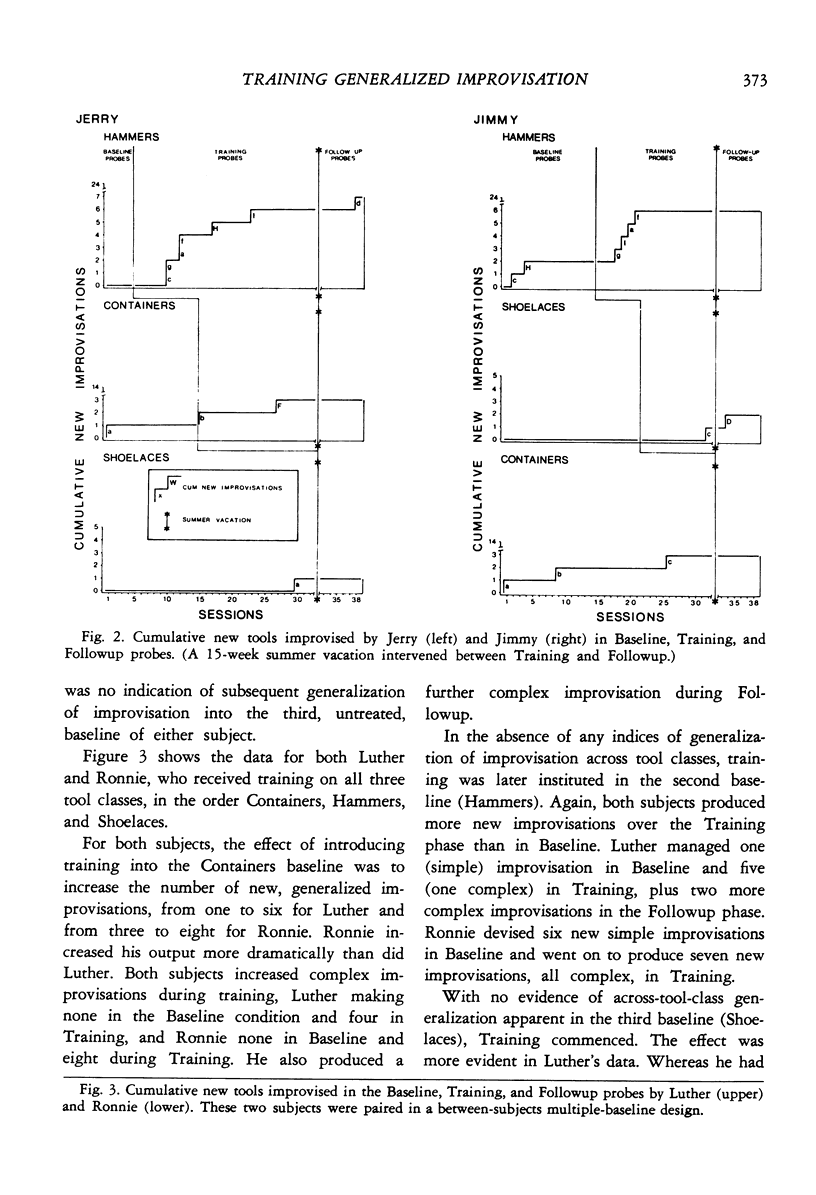
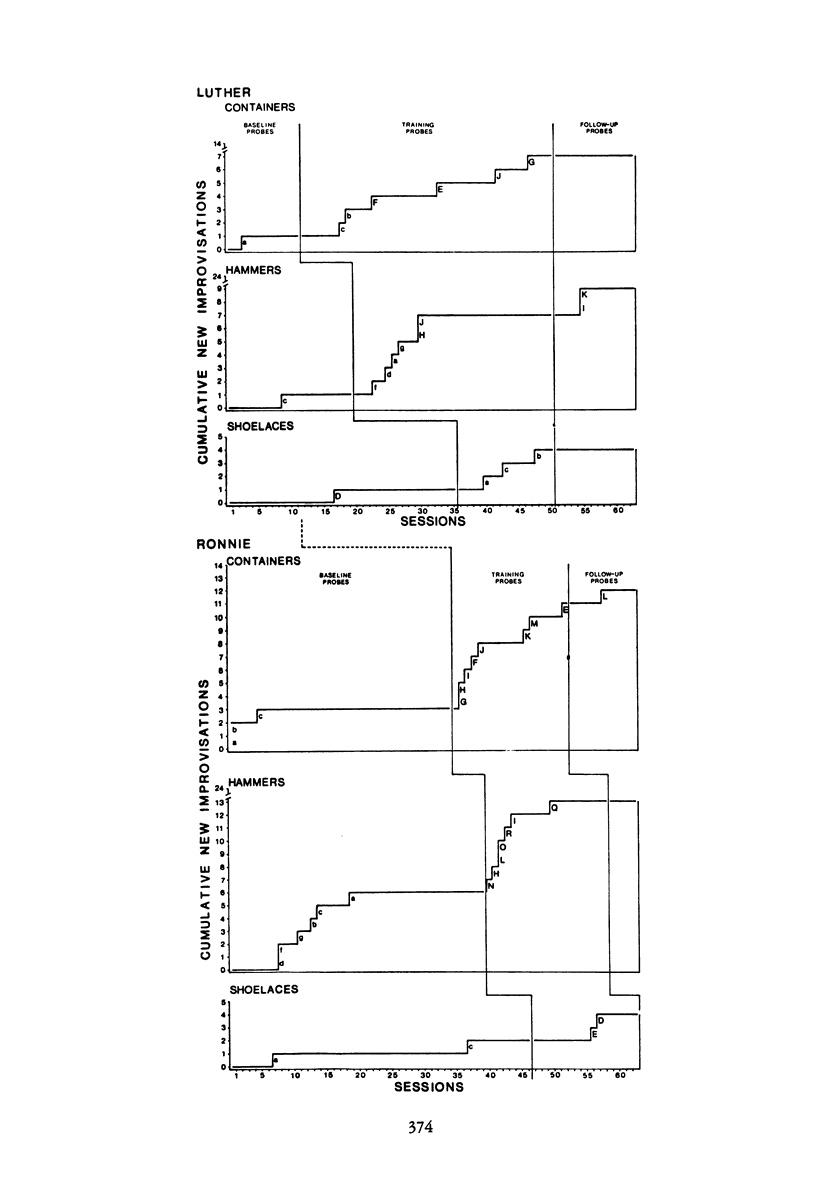
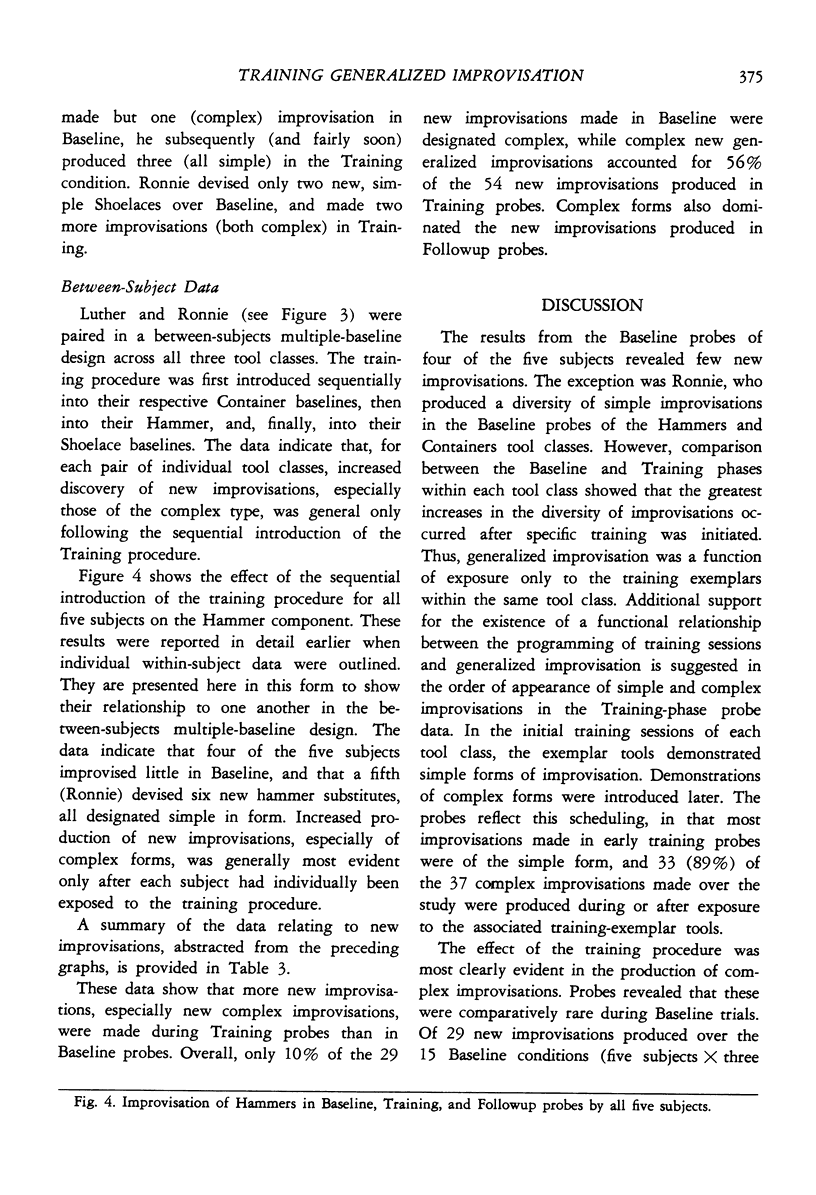
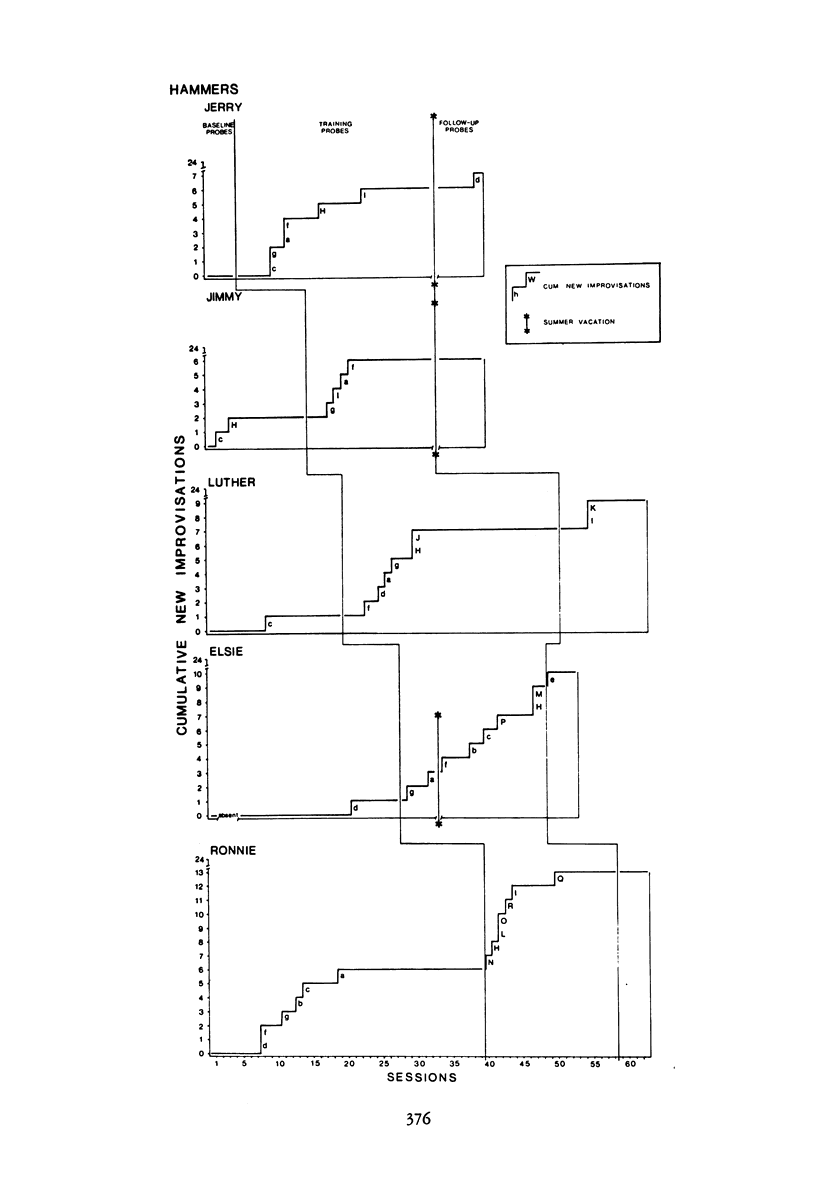
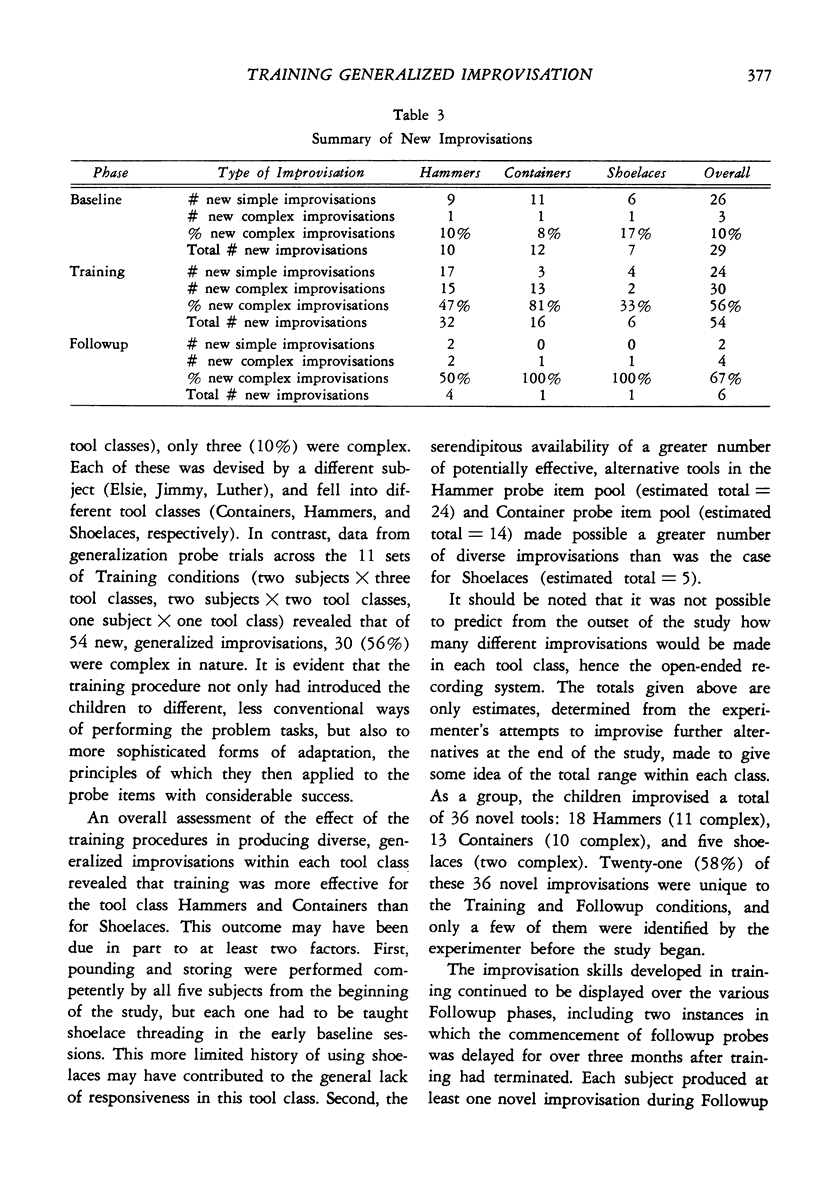
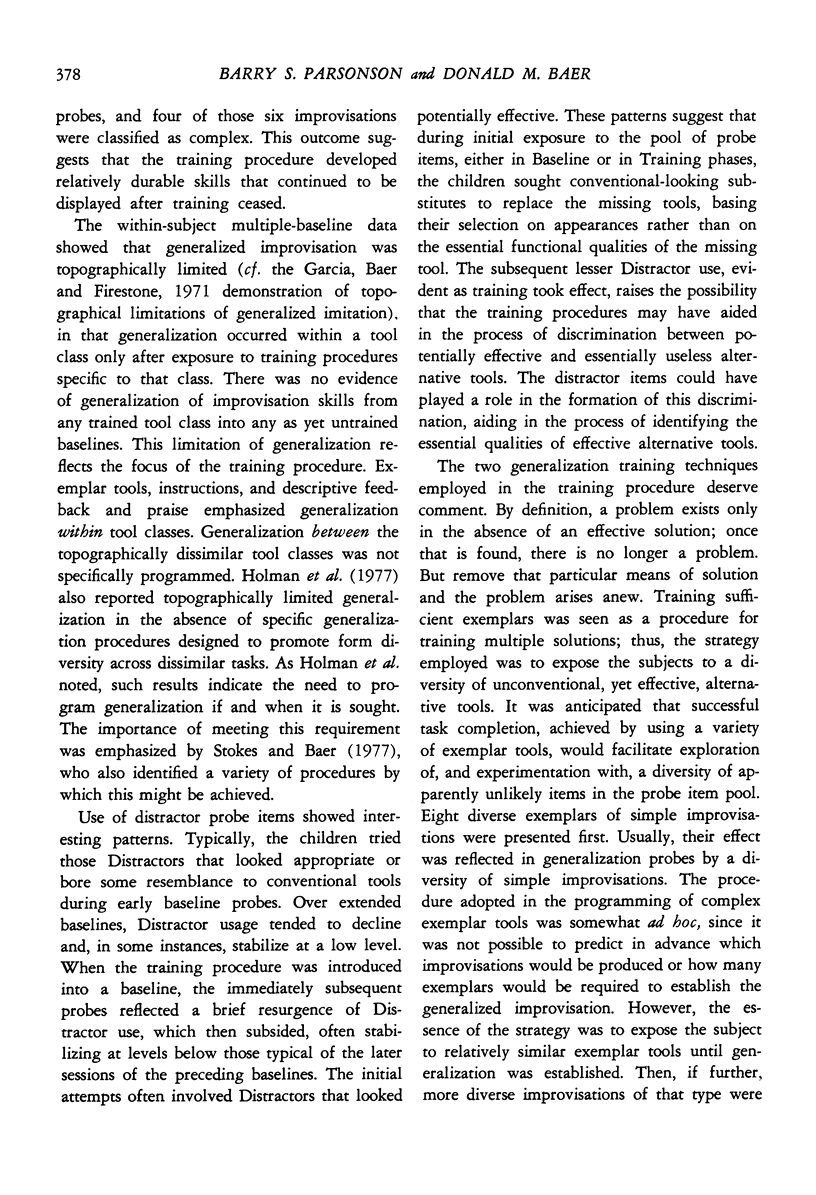
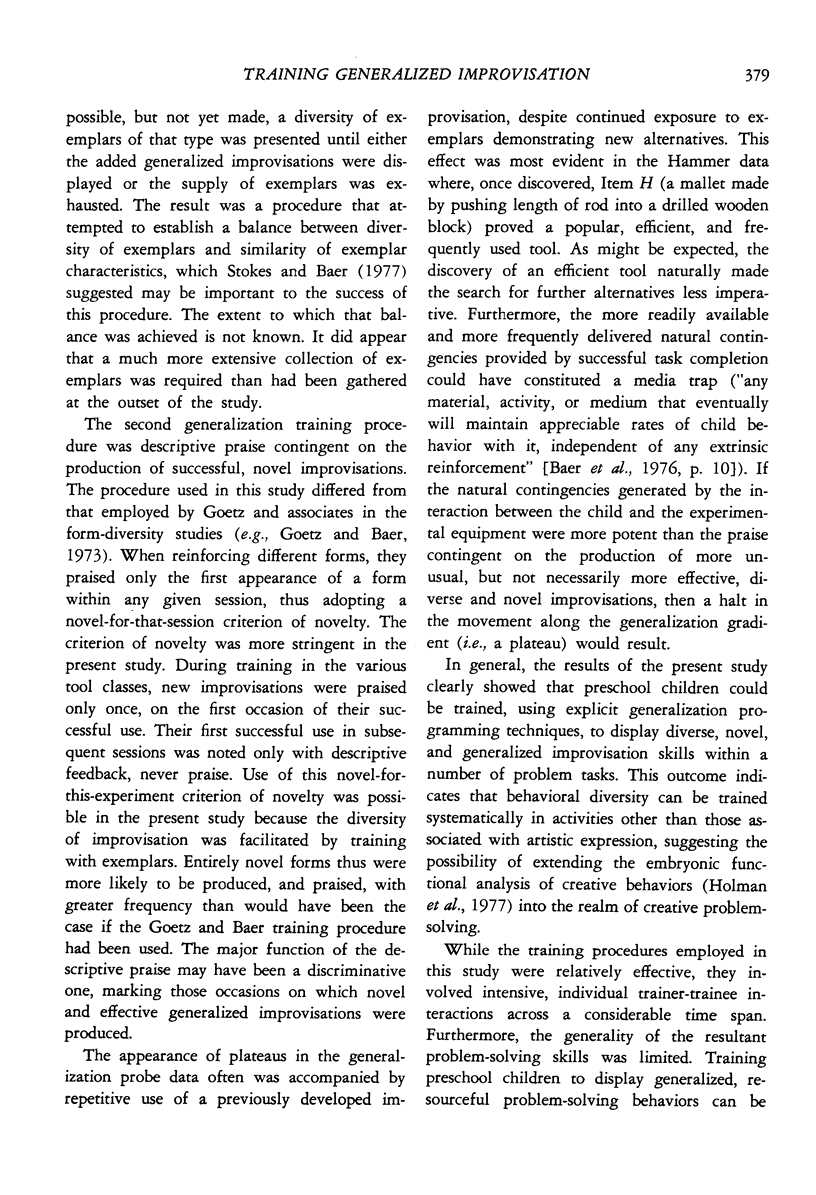
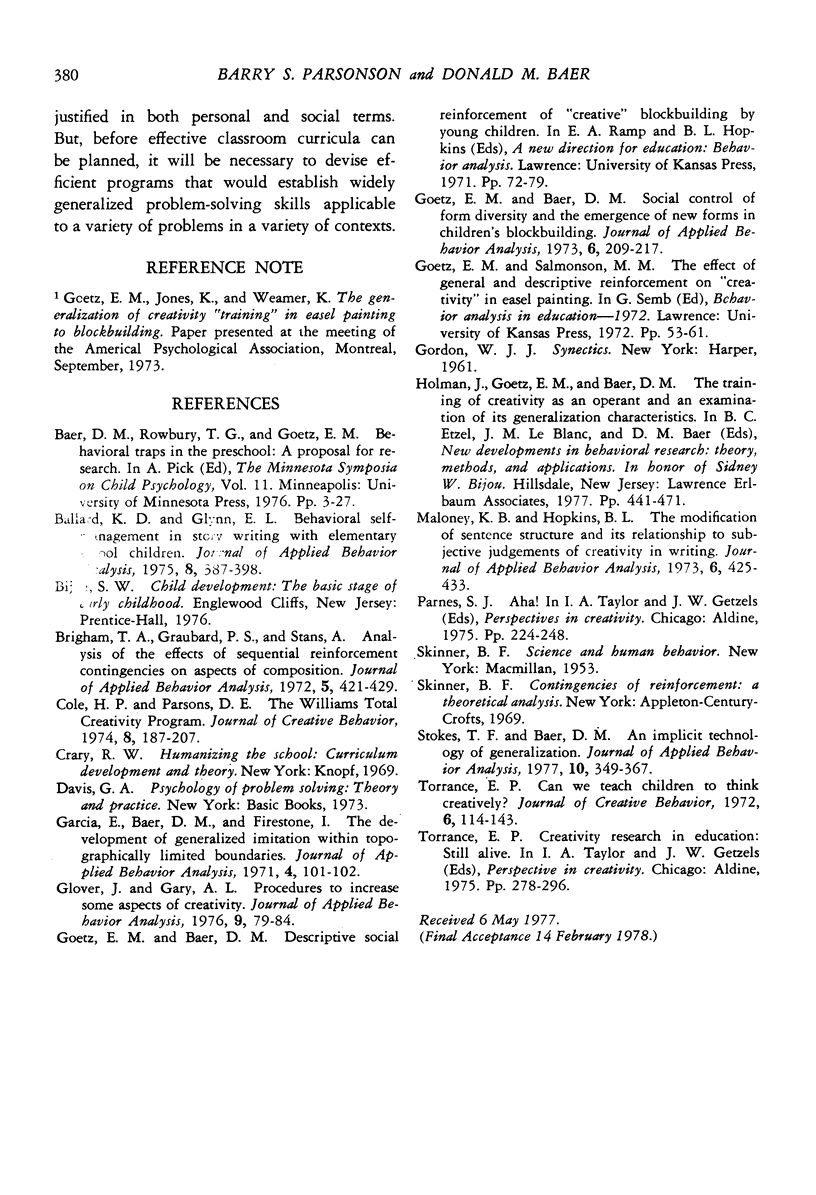
Selected References
These references are in PubMed. This may not be the complete list of references from this article.
- Brigham T. A., Graubard P. S., Stans A. Analysis of the effects of sequential reinforcement contingencies on aspects of composition. J Appl Behav Anal. 1972 Winter;5(4):421–429. doi: 10.1901/jaba.1972.5-421. [DOI] [PMC free article] [PubMed] [Google Scholar]
- Garcia E., Baer D. M., Firestone I. The development of generalized imitation within topographically determined boundaries. J Appl Behav Anal. 1971 Summer;4(2):101–112. doi: 10.1901/jaba.1971.4-101. [DOI] [PMC free article] [PubMed] [Google Scholar]
- Glover J., Gary A. L. Procedures to increase some aspects of creativity. J Appl Behav Anal. 1976 Spring;9(1):79–84. doi: 10.1901/jaba.1976.9-79. [DOI] [PMC free article] [PubMed] [Google Scholar]
- Goetz E. M., Baer D. M. Social control of form diversity and the emergence of new forms in children's blockbuilding. J Appl Behav Anal. 1973 Summer;6(2):209–217. doi: 10.1901/jaba.1973.6-209. [DOI] [PMC free article] [PubMed] [Google Scholar]
- Maloney K. B., Hopkins B. L. The modification of sentence structure and its relationship to subjective judgements of creativity in writing. J Appl Behav Anal. 1973 Fall;6(3):425–433. doi: 10.1901/jaba.1973.6-425. [DOI] [PMC free article] [PubMed] [Google Scholar]
- Pumpen P. P., Gren E. Ia. Rol' belkovogo sinteza v reguliatsii replikatsii RNK-soderzhashchikh bakteriofagov. Dokl Akad Nauk SSSR. 1975 Sep-Oct;224(1):246–248. [PubMed] [Google Scholar]
- Stokes T. F., Baer D. M. An implicit technology of generalization. J Appl Behav Anal. 1977 Summer;10(2):349–367. doi: 10.1901/jaba.1977.10-349. [DOI] [PMC free article] [PubMed] [Google Scholar]


